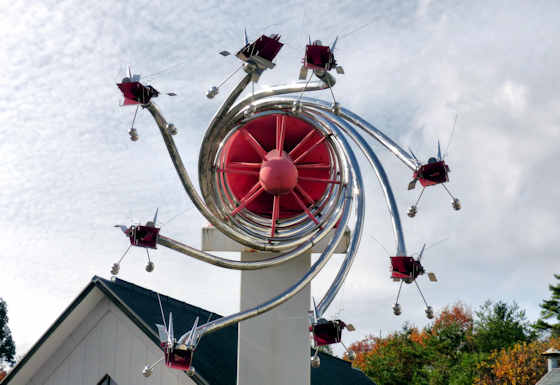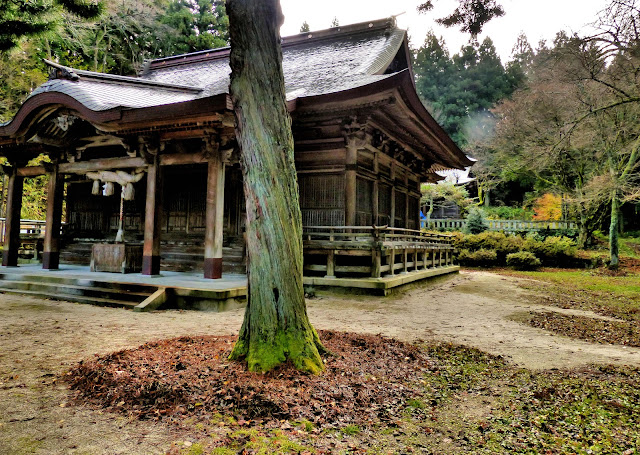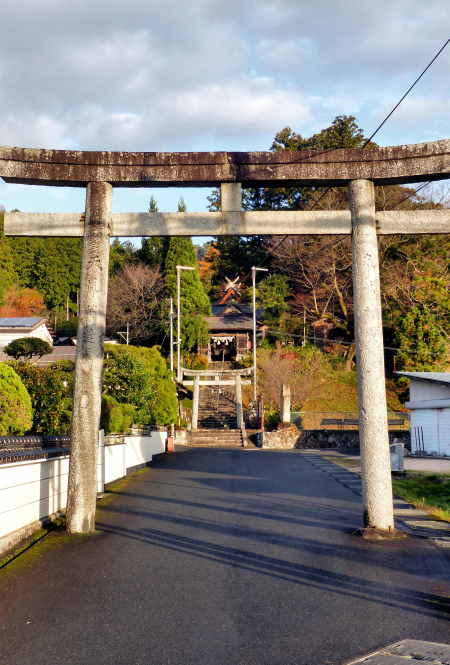Friday, July 28, 2023
Yamata no Orochi
Sunday, April 2, 2023
Inada Shrine & Princess Kushinada
Sunday, November 6, 2022
Igatake Shrine
Igatake Shrine
Wednesday, August 2, 2017
Synchronized Serpents
After the Orochi arrives they then do a series of synchronized movement.
Audiences here kn0w very well when some kagura has been well executed.
Although it was a bit chaotic with 16 serpents, from different groups that were not used to performing together.
Rather than wait for the finale when Susano chops off all their heads, we chose to leave early and avoid the traffic
Sunday, July 30, 2017
Orochi Spectacular
Orochi
Last night we went to Hamada to see the annual Orochi Spectacle. They close off the center crossroads in town and put on regular kagura and end with a unique version of Orochi.Most versions of Orochi don't show the start of the dance which depicts the second to last daughter being sacrificed to Orochi, the 8-headed serpent.
Then the hero Susano arrives. Usually he is alone but a second hero accompanied him in this version. My guess would be his son Isotakeru who according to one of the versions of the myth came with him from the Korean peninsula.
The parents of Kushinada, the last daughter, are instructed by Susano to prepare vats of sake which are then drugged so as to disable the serpents. In return for saving Kushinada from her fate she is given to Susano as a bride.
Then the Orochi arrives. Originally the dance only had a single dancer dressed as the serpent. Here in Iwami it was developed to include 8 serpents in the dance, though many shrine performances will only have four due to space and kagura group size limitations. What is unique about this performance is fully sixteen serpents take part.
Sunday, October 14, 2012
The Month of Little Sleep part 4
Around 2:30am the kagura group took a break, something I have never seen before. I suspect that as the village has shrunk, so has the kagura group, and fewer members means each must do more and therefore not get any breaks during the long night. The audience took the opportunity to pull out some food and spread out... All night long Mr Yama operating the barbecue grill outside had been passing free food into us.... fried noodles, barbecued squid, barbecued crab legs..... along with copious amounts of cold beer and sake, so we were full but could not refuse the offers from different groups in the audience who insisted we join them and share their food....this, for me, is the essence of matsuri....
After the break the action started up with the Oeyama dance with lots of demons including the favorite of the audience, a junior demon...
The spiders web trapped the hero but he was of course able to free himself and kill the demon...
next up was Iwato, usually one of the first dances at a matsuri....
And then Ebisu, ably assisted by junior Ebisu, distributing lucky candy to everyone in the audience...
The penultimate dance was Shoki.......
Outside the sky was lightening and more people had been arriving...... in the countryside people get up at 5... and so it was time for the finale, Susano's battle with the multiheaded Orochi.... It was a small kagura group, so there were only four heads to the serpent, but even so they took all the dance space and spilled out into the audience. An exciting end to a great night..... time to go home to bed and rest up..... in 3 days it would be an Omoto Matsuri up in Nakano....
Thursday, January 22, 2009
Ashinazuchi kagura mask
These are 2 of my versions of the Ashinazuchi mask. Ashinazuchi, most commonly translated as "foot stroking elder", was the husband of Tenazuchi, hand stroking elder, and the father of Kushinadahime.
The only dance he appears in is Yamata No Orochi, most often the grand finale to an Iwami kagura performance.
In the dance, Susano finds Ashinazuchi, Tenazuchi, and Kushinade, the last of their eight daughters, lamenting as they prepare to sacrifice her to the great 8-headed serpent Yamata no Orochi. In return for defeating the serpent, Susano gets Kushinada as his wife.
The Yamata no Orochi story is a myth, but probably based on a legend, and legends are based on historical events. I spent 3 days walking along the Hi River area up in Izumo visiting many of the sites and shrines connected to the legend. This village in the valley below was the home of Ashinazuchi and his family.
Kagura mask Index
Saturday, August 23, 2008
Susano mask
This is an Iwami kagura mask of Susano. Sometimes spelt Susanoh, sometimes Susano-O, sometimes Susano o mikoto. Susano appears in several kagura dances, but the most common, and most often performed as a finale, is the dance telling the story of his defeat of the 8-headed serpent Yamata no Orochi.
According to Yamato mythology Susano is the brother of Amaterasu, and he was kicked out of the High Plain of Heaven for numerous bad deeds attributed to his violent temper. The dynasty founded by Susano existed long before the Yamato rose to power, and from the stories of him locally, a completely different Susano is portrayed. He was a Culture Hero who brought metal working and other technologies from the Korean peninsular, and promoted intercourse between western japan and Korea. In actual fact the stories have him first arriving in Iwami before he moved to Izumo and slayed the dragon. Ever since Susano's descendant, Okuninushi, gave Japan to the Yamato, they have been denigrating him, but he rightly deserves the title of Father of Japan.
Friday, August 15, 2008
Bon Odori
The population of the village has doubled in the past few days. This is O Bon, somewhat similar to the Mexican Day of the Dead, the time that the spirits of the ancestors return to their earthly homes. There is a mass exodus from the cities as children, and grandchildren, return to their home villages. Gravestones have been washed and cleaned, and in our village a matsuri is held.
There are food stalls, games, and of course. kagura. First off the kids performed a couple of dances, then it was time for the village group to dance.
The Ebisu dance is always popular at matsuri's, as he throws bucketfulls of candy out to the kids in the audience.
And of course the Yamata no Orichi dance where Susano battles the eight-headed serpent.
But the main event of the night is the Bon Odori. Every region has their own version of the dance, but it usually involves the villagers dancing in a circle around a central platform that holds the drummer and singers.
Thursday, June 5, 2008
Yamata no Orochi
The story of Susano defeating the 8-headed serpent Yamata no Orochi is the most well known kagura dance in Iwami. In a regular performance, which goes on all night through till dawn, The Orochi dance is the finale.
This performance was a collaboration between Yen Calling ( an ensemble of rock musicians led by Yukata Fukuoka) and a Hamada kagura group, there were only 2 serpents. Later I will post the complete Yamata no Orochi story illustrated with scenes from kagura, and a full blog on Yen calling.


































